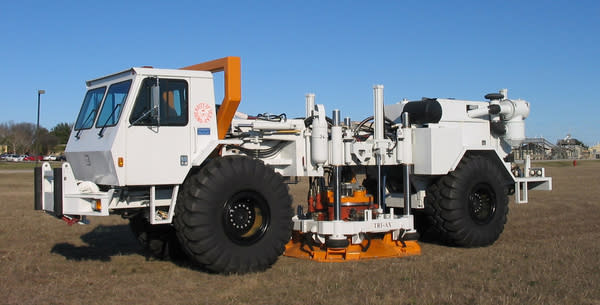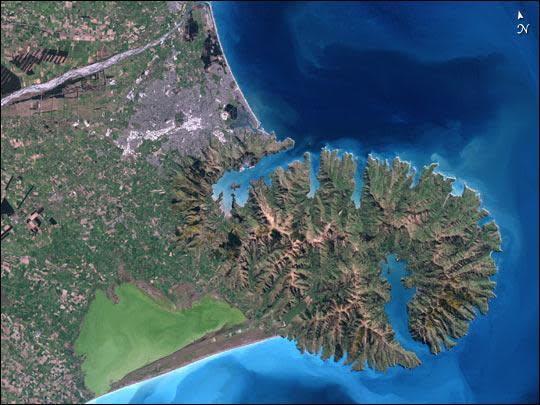Monster Truck Will Shake New Zealand for Safer Buildings
With the tires of a monster truck and guts that pound the ground like a dinosaur, the T-Rex is not just the ultimate Tonka toy.
The truck simulates an earthquake, revealing the properties of rocks and sediments below to watching researchers, and therefore shedding light on how the ground shakes during a temblor.
The U.S. Network for Earthquake Engineering Simulation is sending T-Rex to New Zealand's South Island, to shake the soils around Christchurch, where a series of earthquakes in 2011 destroyed buildings and took lives.
The earthquakes caused widespread liquefaction, a phenomenon in which shaking of water-logged soils turns the sediment temporarily from a solid to a liquid. The jiggly, wet soils undermined buildings and other structures. As many as 7,500 homes were abandoned. Parts of downtown Christchurch remain cordoned off due to the extensive damage.
The seismic data gathered with T-Rex will inform engineers, on an area-by-area basis, how to rebuild structures in Christchurch to resist future earthquakes, according to a statement from the Network for Earthquake Engineering Simulation. The seismic waves can find which soils are more likely to liquefy, and which soils are more stable. Engineers can design structures to withstand earthquakes, but first they need to know more about the soils in each area, the statement said.
"Designing a quake-resistant building starts with the soil," Brady Cox, a professor at the University of Texas at Austin, said in the statement. "The stiffness and layering of the soil has a profound effect on the strength of shaking felt during an earthquake."
The 64,000-pound (29,000 kilogram) shaker truck will sail overseas on Feb. 3, arriving in Christchurch in March.
Reach Becky Oskin at boskin@techmedianetwork.com. Follow her on Twitter @beckyoskin. Follow OurAmazingPlanet on Twitter @OAPlanet. We're also on Facebook and Google+.
Copyright 2013 OurAmazingPlanet, a TechMediaNetwork company. All rights reserved. This material may not be published, broadcast, rewritten or redistributed.



